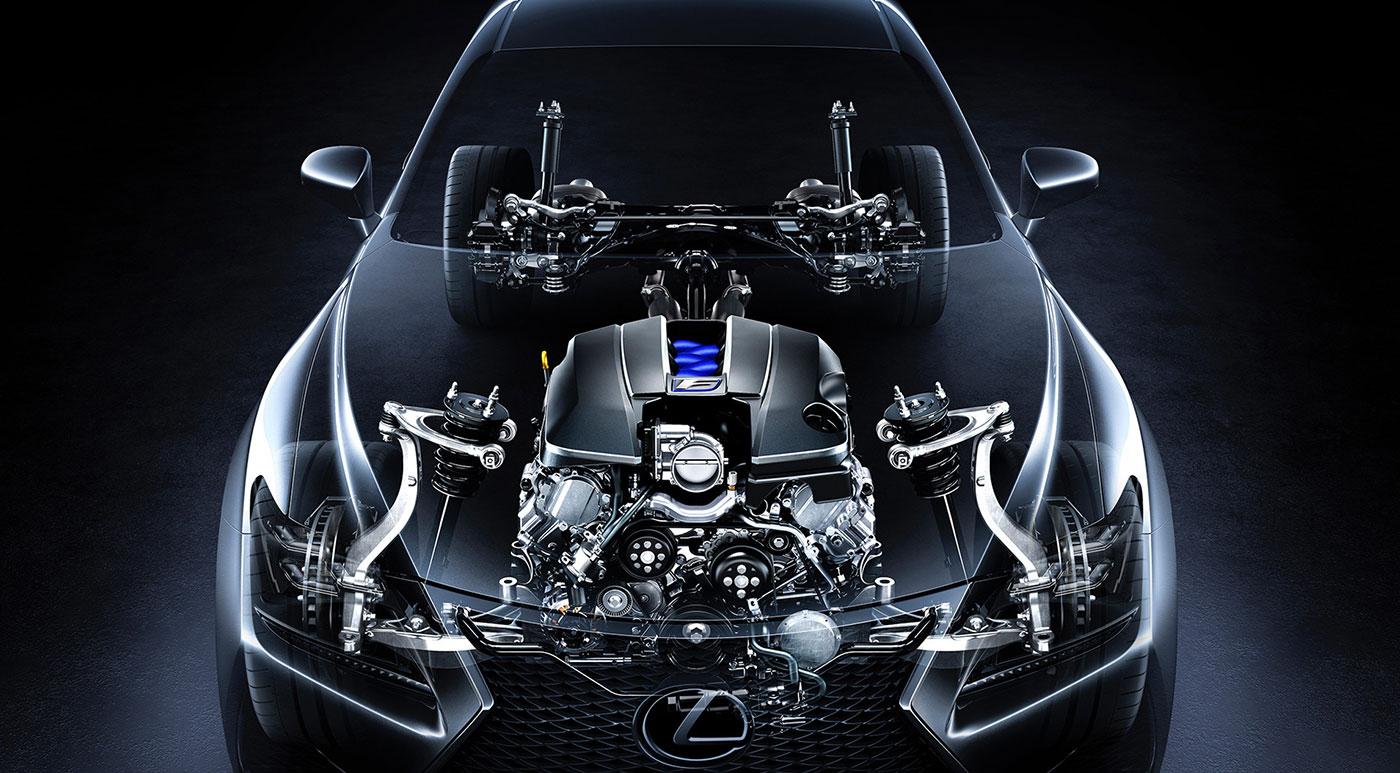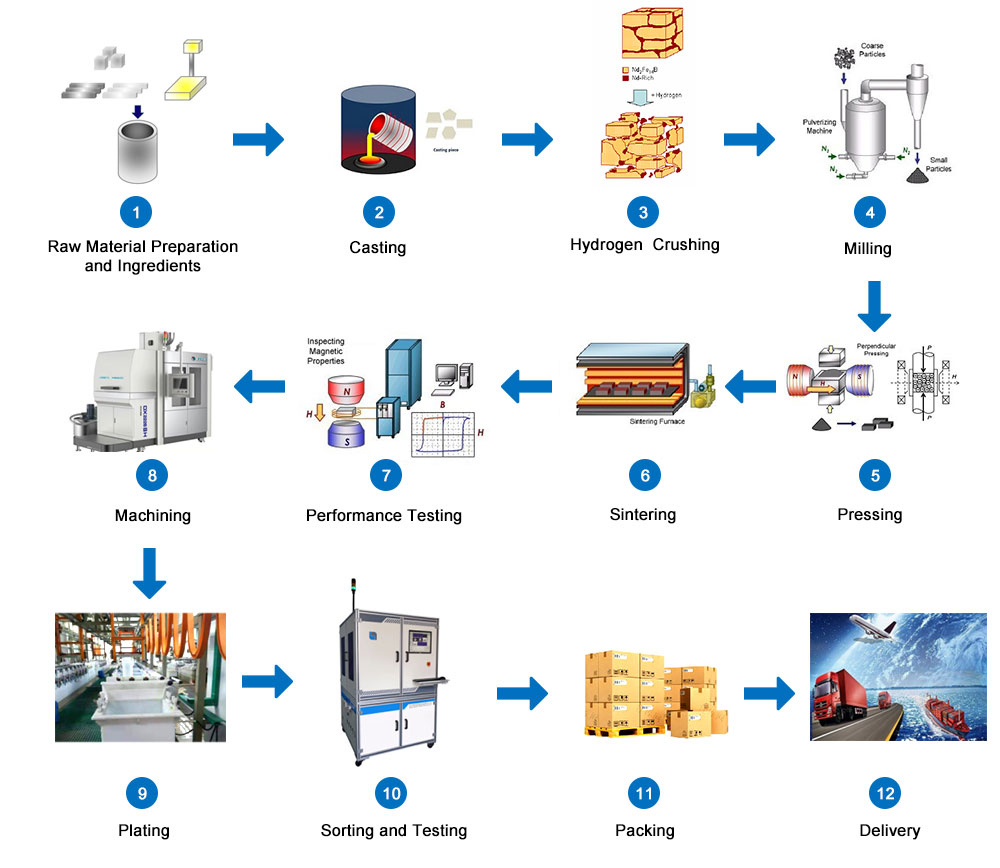The permanent magnet wind generator adopts high-magnetic performance sintered neodymium iron boron permanent magnet, which has a sufficiently high coercivity to avoid magnetism loss at high temperature. The life of the magnet depends on the base material and surface anti-corrosion treatment. The anti-corrosion of NdFeB magnet steel should start from manufacturing.
1. Introduction
The direct-drive permanent magnet wind generator adopts the fan impeller to directly drive the generator to rotate, eliminating the speed-increasing gear box required by the traditional AC excited double-fed asynchronous wind generator, and avoiding the malfunction and maintenance of the gear box during operation. At the same time, the permanent magnet wind generator adopts permanent magnet excitation, no excitation winding, and no slip ring and brush on the rotor; therefore, the structure is simple and the operation is reliable. From 1993 to Enercon GmbH, Germany developed the first large-scale direct-drive permanent magnet wind turbine. The development of wind turbines and permanent magnet wind turbines is in the ascendant. The overall level of China's permanent magnet wind turbines has been in the forefront of the world.

The working environment of a wind turbine is very harsh, and it must be able to withstand the test of high temperature, severe cold, wind and sand, humidity and even salt spray. The design life of a wind turbine is generally twenty years. At present, sintered neodymium iron boron permanent magnets are used for both small wind turbines and megawatt permanent magnet wind turbines. Therefore, the selection of the magnetic parameters of the NdFeB permanent magnet and the requirements for the corrosion resistance of the magnet are very important.
2. Typical magnetic properties of sintered NdFeB used in permanent magnet wind turbine generators
Neodymium iron boron permanent magnet is called the third generation rare earth permanent magnet, and it is the permanent magnet material with the highest magnetic performance so far. The main phase of the sintered NdFeB alloy is the intermetallic compound Nd2Fe14B, and its saturation magnetic polarization (Js) is 1.6T. Since the sintered NdFeB permanent magnet alloy is composed of the main phase Nd2Fe14B and the grain boundary phase, and the grain orientation of Nd2Fe14B is limited by the process conditions, the current magnet remanence can reach up to 1.5T. The German vacuum smelting company (Vacuumschmelze GmbH) has produced NdFeB magnets with a maximum magnetic energy product (BH) max of 57MGOe. Domestic NdFeB manufacturers can produce N50 grade magnets with a maximum magnetic energy product of 53MGOe (Note: This article was published in 2010. With the development of technology, there are already N54 grade magnets on the market, and the highest magnetic energy product is up to 55MGOe). Increasing the main phase ratio of the alloy, increasing the orientation of the crystal grains and the density of the magnet can increase the maximum energy product of the magnet; but it will not exceed the theoretical value of 64MGOe for the maximum energy product of single crystal Nd2Fe14B. Jinluncicai.com is leading manufacturer and factory in supply series of NdFeb magnet and material.
The demagnetization curve of NdFeB at room temperature is similar to a straight line. Therefore, when designing permanent magnet motors, high-grade neodymium iron boron (that is, high (BH) max of the material) is often selected to obtain a high air gap magnetic density. When the motor is running, due to the existence of the alternating demagnetizing field and the demagnetizing effect of the instantaneous large current when the load changes suddenly, it is required to select a neodymium iron boron magnet with a sufficiently high coercivity.
Adding elements such as dysprosium (terbium) to the alloy increases the intrinsic coercivity (jHc) of neodymium iron boron, but the remanence (Br) of the magnet will decrease accordingly. Therefore, high-performance NdFeB magnets used in wind turbine generators take into account its coercivity and remanence.
3. Temperature stability of NdFeB permanent magnet
Wind power generators work in the wilderness and endure the test of scorching heat and cold; at the same time, motor loss also leads to motor temperature rise. The sintered NdFeB magnets given in the table above can work at 120°C. The Curie temperature of the NdFeB permanent magnet alloy is about 310℃. When the temperature of the magnet exceeds the Curie point, it turns from ferromagnetism to paramagnetism. Below the Curie temperature, the remanence of NdFeB decreases with increasing temperature, and its temperature coefficient of remanence α (Br) is -0.095~-0.105%/℃. The coercive force of NdFeB also decreases with the increase of temperature, and the temperature coefficient β (jHc) of its coercive force is -0.54~-0.64%/℃. Choose the appropriate coercive force, the magnet still has a sufficiently high coercive force at the maximum working temperature of the motor design; otherwise, loss of magnetization will occur.
The remanence and coercivity of NdFeB permanent magnet materials are complementary. Adding heavy rare earth elements dysprosium (Dy) and terbium (Tb) to the alloy can significantly increase the coercivity of the magnet. As the coercivity increases, the remanence and maximum magnetic energy product decrease accordingly. Obviously, the choice of high-coercivity magnetic steel for wind turbines must be at the expense of remanence and maximum magnetic energy product.
4, the consistency of magnetic properties of wind power NdFeB magnets
NdFeB magnets are manufactured using a special powder metallurgy process, and the main manufacturing process is completed in a protective atmosphere or under vacuum. The neodymium iron boron green body is pressed in a very strong (~1.5T) magnetic field. The size of NdFeB magnets is limited by these special process conditions.
A large permanent magnet wind generator usually uses thousands of neodymium iron boron magnets, and each pole of the rotor is composed of many magnets. The consistency of the rotor poles requires the consistency of the magnetic steel, including the consistency of dimensional tolerances and magnetic properties. The so-called consistency of magnetic properties includes the small deviation of the magnetic properties between different individuals, as well as the uniformity of the magnetic properties of a single magnet.
There are two types of magnetism: apparent magnetism and intrinsic magnetism. The so-called apparent magnetism of magnetic steel can be measured by its open-circuit magnetic flux and its surface magnetic field strength. The apparent magnetism of the magnet is related to the shape and magnetization state of the magnet. The intrinsic characteristics of the magnetic steel are tested by measuring the demagnetization curve of the sample. The demagnetization curve is a part of the hysteresis loop, which reflects the magnetization reversal characteristics of the permanent magnet material. Measure the demagnetization curve of a magnetic steel sample, provided that the sample needs to be saturated magnetized before measurement.
To detect whether the magnetism of a single magnet is uniform, it is necessary to cut the magnet into several small pieces and measure their demagnetization curves. During the production process, to check whether the magnetism of a furnace of magnets is consistent, it is necessary to sample the magnets from different parts of the sintering furnace to measure the demagnetization curve of the sample. Because the measuring equipment is very expensive, and it is almost impossible to ensure the integrity of each piece of magnetic steel to be measured. Therefore, all products cannot be inspected. The consistency of the magnetic properties of NdFeB must be guaranteed by production equipment and process control.
5. Corrosion resistance of NdFeB
NdFeB alloy contains active rare earth elements, which are easy to oxidize and rust. In applications, unless the NdFeB is encapsulated and isolated from air and water, the surface of the NdFeB needs to be treated with anti-corrosion. Common anti-corrosion coatings are electroplated nickel, electrogalvanized and electrophoretic epoxy resin. The surface phosphating treatment can prevent NdFeB from rusting in a relatively dry environment for a short time.
Rare earth intermetallic compounds can react with hydrogen under certain pressure and temperature. After NdFeB absorbs hydrogen, it releases heat and breaks. The hydrogen crushing in the production of NdFeB takes advantage of this feature. From the point of view of use, the hydrogen fragments of NdFeB are harmful. Strictly speaking, the corrosion of NdFeB starts from its processing. The degreasing after cutting and grinding, the pickling before electroplating, and the electroplating process all have an impact on the surface layer of NdFeB. Improper treatment process may cause unqualified coating quality (such as pinholes), and the bonding of the NdFeB surface layer and the coating layer is not strong.
It is worth noting that although the magnetic properties of NdFeB magnets of the same brand produced by different manufacturers are basically the same, there will be differences in the composition of the alloys, especially the microstructure of the magnets may be very different. Magnetic steel with excellent performance and good corrosion resistance has the characteristics of fine and uniform grains and high magnet density. In the following two metallographic photos of sintered NdFeB magnets, the magnets shown on the left have fine and uniform grains, and the magnets shown on the right have large and uneven grains.
6. Reliability test of NdFeB magnet
The design life of Wind Turbine Generators is 20 years, which means that the magnetic steel can be used for 20 years, its magnetic performance is not significantly attenuated, and the magnetic steel is not corroded. The following test and inspection methods can be used as methods for the manufacturers and users of wind magnetic steel to evaluate and inspect the magnets.
Weightlessness test: use 10mm×10mm×12mm rectangular black plate as sample (12mm height is the magnetizing direction), place it in 2 standard atmospheric pressure, 100% humidity, 120℃ environment, take out after 48h and take out the oxide layer Removal, the weight loss is less than 0.2 mg/cm2.
Thermal demagnetization test: 120℃×4hr, open circuit magnetic flux loss is less than 3%.
Thermal shock test: After 3 cycles of high and low temperatures from -40°C to 120°C, the open circuit magnetic flux loss is less than 3%.
Salt spray test and temperature and humidity test are methods for evaluating electroplated coatings and other anticorrosive coatings.
Other physical properties, such as thermal expansion coefficient, thermal conductivity, electrical resistivity and mechanical strength, all have varying degrees of influence on the usability and reliability of magnetic steel.
Summary
1. This article introduces the magnetic parameters of neodymium iron boron permanent magnets for megawatt wind turbines.
2. High-coercivity sintered NdFeB can ensure that the magnet still has enough coercivity at high temperature to avoid high temperature loss of magnetism.
3. The corrosion resistance of the magnetic steel of the wind motor depends not only on the surface coating treatment of the magnet, but also on the corrosion resistance of the substrate.
4. The test methods of magnet reliability include weightlessness test, thermal demagnetization test, coating corrosion resistance test, etc.


 sales00@jlmagnet.com
sales00@jlmagnet.com






